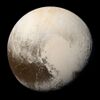Astronomy:2010 RF43
| Discovery [1][2] | |
|---|---|
| Discovered by | D. L. Rabinowitz M. Schwamb S. Tourtellotte |
| Discovery site | La Silla Obs. |
| Discovery date | 6 September 2010 (first observed only) |
| Designations | |
| 2010 RF43 | |
| Minor planet category | TNO [3][4] · SDO [5] p-DP [6] · distant [1] |
| Orbital characteristics [3] | |
| Epoch 31 May 2020 (JD 2459000.5) | |
| Uncertainty parameter 2 | |
| Observation arc | 44.00 yr (16,071 days) |
| |{{{apsis}}}|helion}} | 61.903 AU |
| |{{{apsis}}}|helion}} | 37.482 AU |
| 49.692 AU | |
| Eccentricity | 0.2457 |
| Orbital period | 350.30 yr (127,948 d) |
| Mean anomaly | 97.520° |
| Mean motion | 0° 0m 10.08s / day |
| Inclination | 30.638° |
| Longitude of ascending node | 25.320° |
| 193.480° | |
| Physical characteristics | |
| Mean diameter | 636 km (estimate)[7] 643 km (estimate)[6] ≈735 km (estimate)[4] |
| Geometric albedo | 0.09 (assumed)[4] 0.10 (assumed)[7] 0.11 (assumed)[6] |
| Absolute magnitude (H) | 3.9[3] · 4.0[6] · 4.1[7] |
2010 RF43 is a trans-Neptunian object of the scattered disc orbiting in the outermost regions of the Solar System. It measures approximately 650 kilometers (400 mi) in diameter and is a strong dwarf-planet candidate. The object was first observed on 9 September 2010, by American astronomers David Rabinowitz, Megan Schwamb and Suzanne Tourtellotte at ESO's La Silla Observatory in northern Chile.[1]
Orbit and classification
2010 RF43 orbits the Sun at a distance of 37.5–61.9 AU once every 350 years and 4 months (127,948 days; semi-major axis of 49.7 AU). Its orbit has an eccentricity of 0.25 and an inclination of 31° with respect to the ecliptic.[3] The body's observation arc begins with a precovery observation taken at Siding Spring Observatory in August 1976.[1]
Due to its relatively high eccentricity and inclination, it is an object of the scattered disc rather than one of the regular Kuiper belt.[2][8] Its perihelion of 37.5 AU is also too low to make it a detached object, which typically stay above 40 AU and never come close to the orbit of Neptune.
Physical characteristics
Diameter and albedo
Based on an absolute magnitude of 3.9,[3] and an assumed albedo of 0.09, the Johnston's archive estimates a mean-diameter of approximately 735 kilometers (457 mi),[4] while astronomer Michael Brown assumes an albedo of 0.11 and calculates a diameter of 643 kilometers (400 mi) using a fainter magnitude of 4.0. Brown also characterizes the object as a "highly likely dwarf planet", the second-highest level in his classification scheme (also see list of candidates).[6]
The Collaborative Asteroid Lightcurve Link assumes an albedo of 0.10 and calculates a diameter of 636 kilometers (395 mi) based on an absolute magnitude of 4.1.[7]
Rotation period
As of 2020, no rotational lightcurve of this object has been obtained from photometric observations. The object's rotation period, pole and shape remain unknown.[3][7]
Numbering and naming
As of 2020, this minor planet has not been numbered or named.[1]
References
- ↑ 1.0 1.1 1.2 1.3 1.4 "2010 RF43". Minor Planet Center. http://www.minorplanetcenter.net/db_search/show_object?object_id=2010+RF43.
- ↑ 2.0 2.1 "List Of Centaurs and Scattered-Disk Objects". Minor Planet Center. https://www.minorplanetcenter.net/iau/lists/t_centaurs.html.
- ↑ 3.0 3.1 3.2 3.3 3.4 3.5 "JPL Small-Body Database Browser: (2010 RF43)". Jet Propulsion Laboratory. https://ssd.jpl.nasa.gov/sbdb.cgi?sstr=3545742.
- ↑ 4.0 4.1 4.2 4.3 Johnston, Wm. Robert (18 August 2020). "List of Known Trans-Neptunian Objects". Johnston's Archive. http://www.johnstonsarchive.net/astro/tnoslist.html.
- ↑ Buie, Marc W.. "Orbit Fit and Astrometric record for 10RF43". SwRI (Space Science Department). http://www.boulder.swri.edu/~buie/kbo/astrom/10RF43.html.
- ↑ 6.0 6.1 6.2 6.3 6.4 Brown, Michael E.. "How many dwarf planets are there in the outer solar system?". California Institute of Technology. http://web.gps.caltech.edu/~mbrown/dps.html.
- ↑ 7.0 7.1 7.2 7.3 7.4 "LCDB Data for (2010+RF43)". Asteroid Lightcurve Database (LCDB). http://www.minorplanet.info/PHP/generateOneAsteroidInfo.php?AstInfo=0%7C2010+RF43.
- ↑ "List Of Transneptunian Objects". Minor Planet Center. http://www.minorplanetcenter.org/iau/lists/TNOs.html.
External links
- MPEC 2011-U09 : 2010 RF43, Minor Planet Electronic Circular, 17 October 2011
- 2010 RF43 at AstDyS-2, Asteroids—Dynamic Site
- 2010 RF43 at the JPL Small-Body Database



